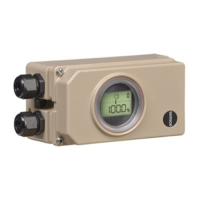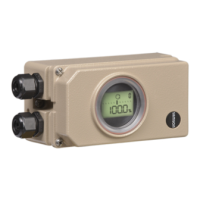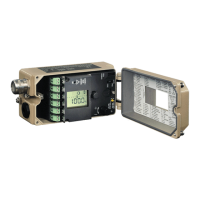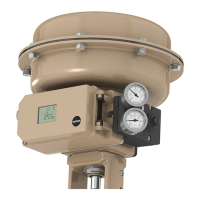98 EB 8389-1S EN
Appendix
Code
no.
Parameter – Readings/
values [default setting]
Description
Note: Codes with marked with an asterisk (*) must be enabled with Code3 prior to conguration.
49* A6 Unassigned
A7 Δp_out reference val-
ue
Read only
The valve moves to the lower range value (Code49 - d2) and up-
per range value (Code49 - d3) with a certain signal pressure.
These signal pressures are used to form the Δp_out reference value
[bar].
Note: The reference value only applies to the adjusted step and
ramp values.
A8* Activate Δp_out moni-
toring
[NO], YES, ESC
Activates Δp_out monitoring (YES) or deactivates it (No)
A9* Δp_out monitoring
value
0.00 to 7.00bar,
[1.00bar,] ESC
Test canceled if signal pressure change exceeds or falls below the
reference value. The reference value is made up of Δp_out refer-
ence value Δp_out reference value (Code49 - A7) and the Δp_out
monitoring value.
d Step parameters for the partial stroke test (PST)
d0, d1
Unassigned
d2* Lower range value
0.0 to [100.0]%, ESC
Start value of the test range
Note: To perform a partial stroke test, the 'Lower range value' must
be near the current operating point ± 'Tolerance limit'.
The Tolerance limit is 2.0% by default. It can be changed in the
operator software, e.g. TROVIS-VIEW.
d3* Upper range value
0.0 to 100.0%,
[90.0%], ESC
End value of the test range
d4* Activation of ramp
function
No, [YES]
YES: The valve is moved through the test range within the ad-
justed ramp time.
No:
The valve is moved in steps through the test range (step
response).
d5* Ramp time (decreas-
ing)
0 to 9999s, (600s],
ESC
The time required by the valve to move through the range from
CLOSED to OPEN position.
The time to move from Lower range value (Code49 - d2) to Upper
range value (Code49 - d3) is calculated:
|Upper range value – Lower range value| / 100 x Ramp time (in-
creasing)
Appendix
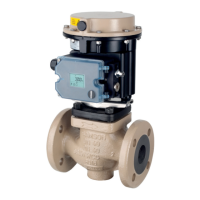
